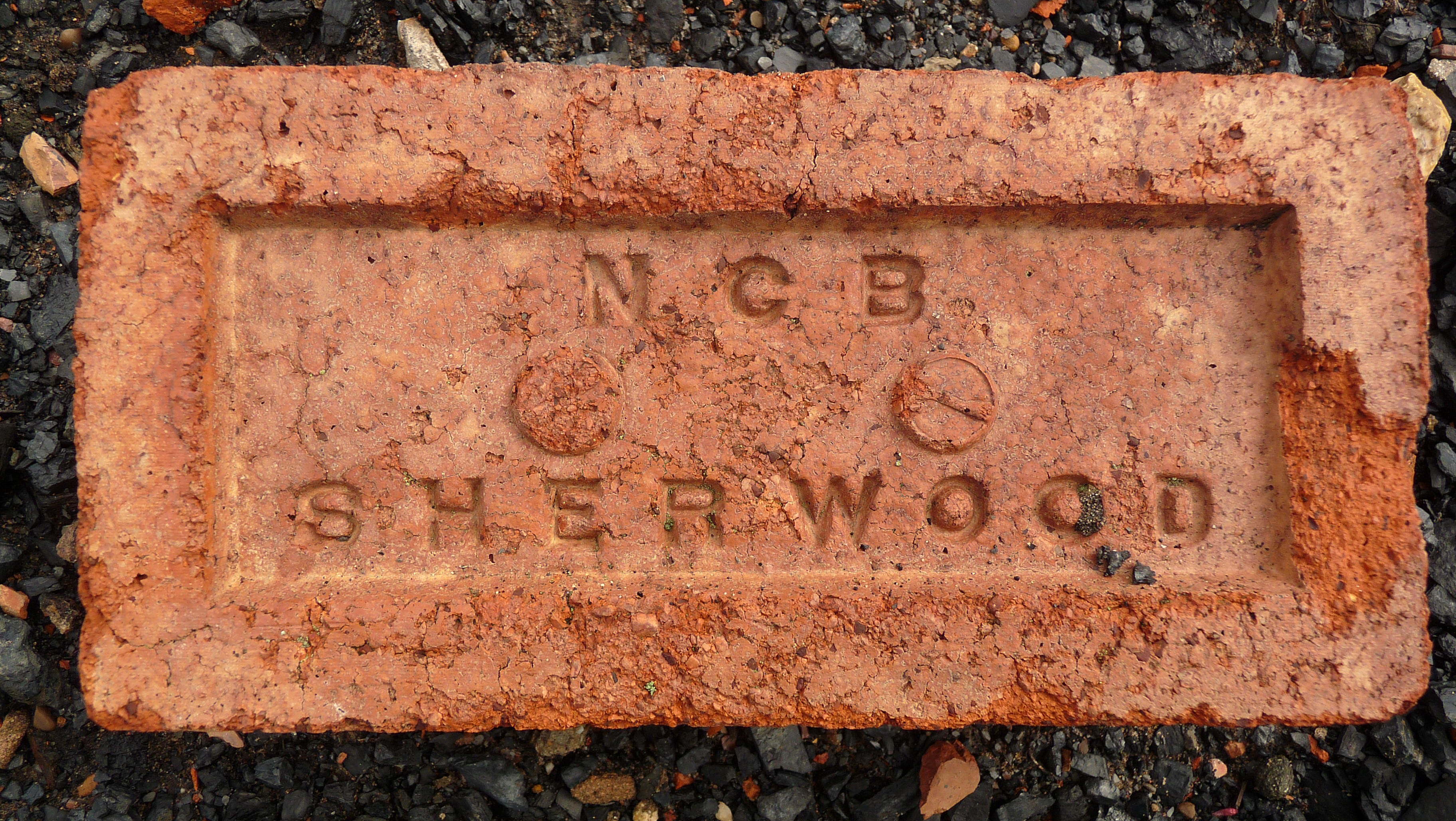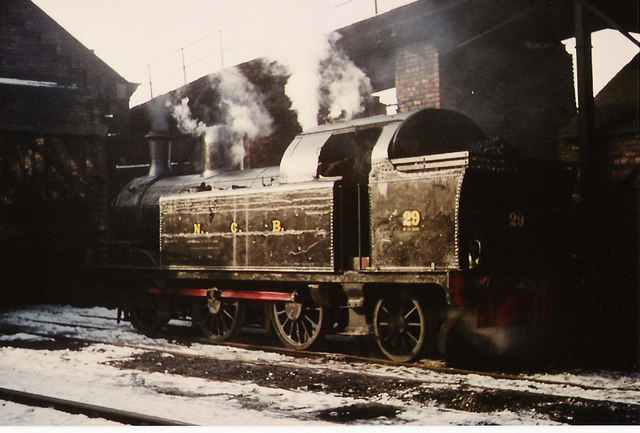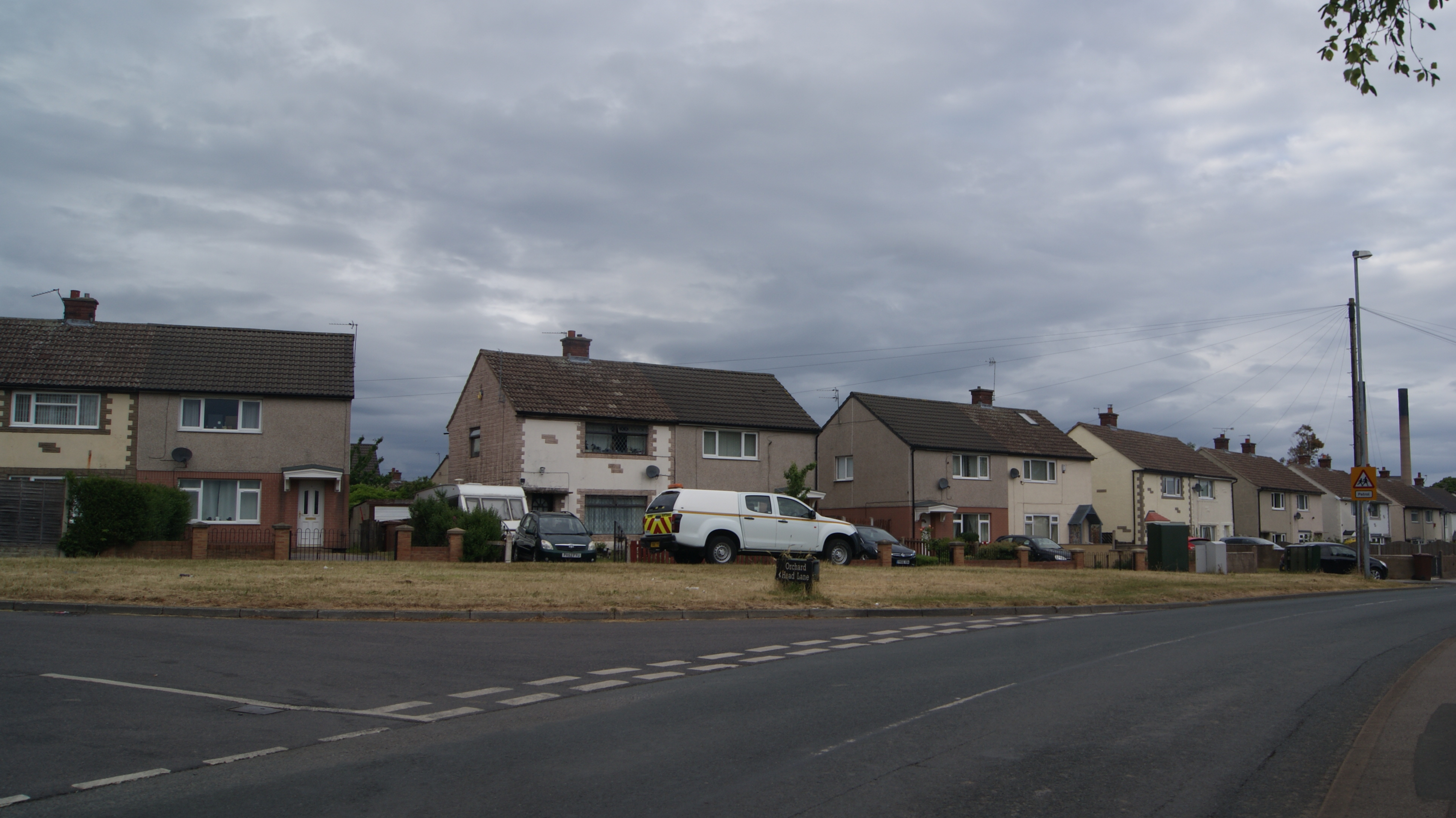Coal Board on:
[Wikipedia]
[Google]
[Amazon]
The National Coal Board (NCB) was the statutory corporation created to run the
 The NCB acquired 958 collieries, the property of about 800 companies. Compensation of £164,660,000 was paid to the owners for the collieries and £78,457,000 to former owners and for other assets such as 55 coke ovens, 85 brickworks and 20 smokeless fuel plants. The collieries it had acquired varied considerably in size and output. Coal was mined from seams that varied from 20 to 200 inches thick and the average pit produced 245,000 tons annually. More than a third of collieries produced less than 100,000 tons and 50 collieries produced more than 700,000 tons.
The coal board divided the country into divisions, corresponding to the major coalfields, and each division was divided into areas with an output of approximately 4 million tons. The board also took over power stations at some collieries and railway sidings. It managed an estate of more than 140,000 houses and more than 200,000 acres of farmland. At its inception the NCB employed nearly 800,000 workers which was four percent of Britain's total workforce. Its national headquarters were established in Hobart House, London.
The NCB acquired 958 collieries, the property of about 800 companies. Compensation of £164,660,000 was paid to the owners for the collieries and £78,457,000 to former owners and for other assets such as 55 coke ovens, 85 brickworks and 20 smokeless fuel plants. The collieries it had acquired varied considerably in size and output. Coal was mined from seams that varied from 20 to 200 inches thick and the average pit produced 245,000 tons annually. More than a third of collieries produced less than 100,000 tons and 50 collieries produced more than 700,000 tons.
The coal board divided the country into divisions, corresponding to the major coalfields, and each division was divided into areas with an output of approximately 4 million tons. The board also took over power stations at some collieries and railway sidings. It managed an estate of more than 140,000 houses and more than 200,000 acres of farmland. At its inception the NCB employed nearly 800,000 workers which was four percent of Britain's total workforce. Its national headquarters were established in Hobart House, London.
 The NCB operated extensive
The NCB operated extensive
 The NCB was a major
The NCB was a major
National Coal Mining Museum for England
Scottish Mining Museum
Big Pit: National Coal Museum – Wales
{{authority control Coal in the United Kingdom Defunct mining companies of the United Kingdom Former nationalised industries of the United Kingdom Energy companies established in 1946 Non-renewable resource companies established in 1946 Non-renewable resource companies disestablished in 1987 1946 establishments in the United Kingdom 1987 disestablishments in the United Kingdom Defunct public bodies of the United Kingdom History of coal mining
nationalised
Nationalization (nationalisation in British English) is the process of transforming privately-owned assets into public assets by bringing them under the public ownership of a national government or state. Nationalization usually refers to pri ...
coal mining industry in the United Kingdom
The United Kingdom of Great Britain and Northern Ireland, commonly known as the United Kingdom (UK) or Britain, is a country in Europe, off the north-western coast of the European mainland, continental mainland. It comprises England, Scotlan ...
. Set up under the Coal Industry Nationalisation Act 1946
The Coal Industry Nationalisation Act of 1946 (9 & 10 Geo. 6 c. 59) was an Act of the Parliament of the United Kingdom which nationalised, or brought into state control, the coal industry in the United Kingdom. It established the National Coa ...
, it took over the United Kingdom's collieries on "vesting day", 1 January 1947. In 1987, the NCB was renamed the British Coal Corporation
British may refer to:
Peoples, culture, and language
* British people, nationals or natives of the United Kingdom, British Overseas Territories, and Crown Dependencies.
** Britishness, the British identity and common culture
* British English ...
, and its assets were subsequently privatised.
Background
Collieries were taken under government control during theFirst
First or 1st is the ordinal form of the number one (#1).
First or 1st may also refer to:
*World record, specifically the first instance of a particular achievement
Arts and media Music
* 1$T, American rapper, singer-songwriter, DJ, and reco ...
and Second World War
World War II or the Second World War, often abbreviated as WWII or WW2, was a world war that lasted from 1939 to 1945. It involved the World War II by country, vast majority of the world's countries—including all of the great power ...
s. The Sankey Commission
The Coal Industry Commission Act 1919 (c 1) was an Act of Parliament of the United Kingdom, which set up a commission, led by Mr Justice Sankey (and so known as the "Sankey Commission"), to consider joint management or nationalisation of the coa ...
in 1919 gave R. H. Tawney
Richard Henry Tawney (30 November 1880 – 16 January 1962) was an English economic historian, social critic, ethical socialist,Noel W. Thompson. ''Political economy and the Labour Party: the economics of democratic socialism, 1884-2005''. 2nd ed ...
, Sidney Webb and Sir Leo Chiozza Money
Sir Leo George Chiozza Money (; 13 June 1870 – 25 September 1944), born Leone Giorgio Chiozza, was an Italian-born economic theorist who moved to Britain in the 1890s, where he made his name as a politician, journalist and author. In the early ...
the opportunity to advocate nationalisation, but it was rejected.
Coal reserves were nationalised during the war in 1942 and placed under the control of the Coal Commission, but the mining industry remained in private hands. At the time, many coal companies were small, although some consolidation had taken place in the years before the war.
Formation and organisation
The NCB was one of a number of public corporations created byClement Attlee
Clement Richard Attlee, 1st Earl Attlee, (3 January 18838 October 1967) was a British politician who served as Prime Minister of the United Kingdom from 1945 to 1951 and Leader of the Labour Party from 1935 to 1955. He was Deputy Prime Min ...
's post-war Labour government
Clement Attlee was invited by King George VI to form the Attlee ministry in the United Kingdom in July 1945, succeeding Winston Churchill as Prime Minister of the United Kingdom. The Labour Party had won a landslide victory at the 1945 gene ...
to manage nationalised industries. The Coal Industry Nationalisation Act received royal assent
Royal assent is the method by which a monarch formally approves an act of the legislature, either directly or through an official acting on the monarch's behalf. In some jurisdictions, royal assent is equivalent to promulgation, while in othe ...
on 12 July 1946 and the NCB was formally constituted on 15 July, with Lord Hyndley as its chairman. On 1 January 1947 a notice posted at every colliery in the country read, "This colliery is now managed by the National Coal Board on behalf of the people". Opencast operations were taken over on 1 April 1952.
 The NCB acquired 958 collieries, the property of about 800 companies. Compensation of £164,660,000 was paid to the owners for the collieries and £78,457,000 to former owners and for other assets such as 55 coke ovens, 85 brickworks and 20 smokeless fuel plants. The collieries it had acquired varied considerably in size and output. Coal was mined from seams that varied from 20 to 200 inches thick and the average pit produced 245,000 tons annually. More than a third of collieries produced less than 100,000 tons and 50 collieries produced more than 700,000 tons.
The coal board divided the country into divisions, corresponding to the major coalfields, and each division was divided into areas with an output of approximately 4 million tons. The board also took over power stations at some collieries and railway sidings. It managed an estate of more than 140,000 houses and more than 200,000 acres of farmland. At its inception the NCB employed nearly 800,000 workers which was four percent of Britain's total workforce. Its national headquarters were established in Hobart House, London.
The NCB acquired 958 collieries, the property of about 800 companies. Compensation of £164,660,000 was paid to the owners for the collieries and £78,457,000 to former owners and for other assets such as 55 coke ovens, 85 brickworks and 20 smokeless fuel plants. The collieries it had acquired varied considerably in size and output. Coal was mined from seams that varied from 20 to 200 inches thick and the average pit produced 245,000 tons annually. More than a third of collieries produced less than 100,000 tons and 50 collieries produced more than 700,000 tons.
The coal board divided the country into divisions, corresponding to the major coalfields, and each division was divided into areas with an output of approximately 4 million tons. The board also took over power stations at some collieries and railway sidings. It managed an estate of more than 140,000 houses and more than 200,000 acres of farmland. At its inception the NCB employed nearly 800,000 workers which was four percent of Britain's total workforce. Its national headquarters were established in Hobart House, London.
Formal duties
The formal duties of the National Coal Board (defined by Section 1 of the Coal Industry Nationalisation Act 1946) were:History
In 1947, about half the collieries were in need of immediate attention and a development programme was begun. Between 1947 and 1956, the NCB spent more than £550 million on major improvements and new sinkings, much of it to mechanise the coal-getting process underground and by 1957 Britain's collieries were producing cheaper coal than anywhere in Europe. The ''Plan for Coal'' produced in 1950 aimed at increasing output from 184 million to 250 million tons by 1970. Competition from cheap oil imports arrived in the end of the 1950s, and in 1957 the coal industry began to contract. Between 1958 and 1959, 85 collieries closed. In 1960,Alf Robens
Alfred Robens, Baron Robens of Woldingham, PC (18 December 1910 – 27 June 1999) was an English trade unionist, Labour politician and industrialist. His political ambitions, including an aspiration to become Prime Minister, were frustrated b ...
became the chairman of the NCB, and he introduced a policy concentrating on the most productive pits. During his ten-year tenure, productivity increased by 70%, but with far fewer pits and a much reduced workforce. In 1967, the NCB reorganised its structure into 17 new areas each employing about 20,000 men. In 1956, 700,000 men produced 207 million tons of coal; by 1971, fewer than 290,000 workers were producing 133 million tons at 292 collieries.
The 1974 ''Plan of Coal'' produced in the aftermath of the 1972 miners' strike envisaged that the coal industry would replace 40 million tons of obsolete capacity and ageing pits while maintaining its output. By 1983, the NCB would invest £3,000 million on developing new collieries.
In 1984, it was alleged that the NCB had a list of collieries earmarked for closure and its chairman, Ian MacGregor
Sir Ian Kinloch MacGregor, KBE (21 September 1912 – 13 April 1998) was a Scottish-American metallurgist and industrialist, most famous in the UK for his controversial tenure at the British Steel Corporation and his conduct during the 1984� ...
indicated that the board was looking to reduce output by 4 million tons, a contributory factor in the 1984–85 miners' strike. The strike was one of the longest and most bitter in history and caused great suffering for the striking miners. During the strike, the NCB lost markets and 23 collieries had closed before the end of 1985.
On 5 March 1987, the Coal Industry Act 1987
The British Coal Corporation was a nationalised corporation responsible for the mining of coal in the United Kingdom from 1987 until it was effectively dissolved in 1997. The corporation was created by renaming its predecessor, the National Co ...
received royal assent, signalling the end of the NCB and the formation of its successor, the British Coal Corporation
British may refer to:
Peoples, culture, and language
* British people, nationals or natives of the United Kingdom, British Overseas Territories, and Crown Dependencies.
** Britishness, the British identity and common culture
* British English ...
.
Other activities
Railways
 The NCB operated extensive
The NCB operated extensive industrial railway
An industrial railway is a type of railway (usually private) that is not available for public transportation and is used exclusively to serve a particular industrial, logistics, or military site. In regions of the world influenced by British ra ...
systems at its collieries, employing steam traction until autumn 1982 when Bold Colliery ended regular use of steam locomotives. The NCB's research establishment at Stoke Orchard
Stoke Orchard is a village or hamlet north-west of Cheltenham in Gloucestershire, England.
Stoke Orchard was formerly home to the Coal Research Establishment of the National Coal Board, which moved onto the site of a Ministry for Aircraft Prod ...
in Gloucestershire was founded in 1950 with Jacob Bronowski
Jacob Bronowski (18 January 1908 – 22 August 1974) was a Polish-British mathematician and philosopher. He was known to friends and professional colleagues alike by the nickname Bruno. He is best known for developing a humanistic approach to sc ...
as Director of Research. It closed following privatisation of the coal mining industry. The Stoke Orchard library was safeguarded after closure and is now held by the North of England Institute of Mining and Mechanical Engineers
The North of England Institute of Mining and Mechanical Engineers (NEIMME), commonly known as The Mining Institute, is a British Royal Chartered learned society and membership organisation dedicated to advancing science and technology in the N ...
.
Subsidiaries
NCB subsidiaries managed coal based chemical products (Coal Products Division) and the production of helmets and other mining equipment (Tredomen Engineering Ltd). In the mid 1970s, the activities of Coal Products Division were transferred to two new companies; National Smokeless Fuels Ltd and Thomas Ness Ltd, although they remained wholly owned by the NCB.Films
In 1952, the NCB established a film unit. The board was keen to train its staff and new recruits and initiated a scheme to produce technical films as well as commissioning films from outside companies. More than nine hundred films were made before the unit closed in 1984.Housing
 The NCB was a major
The NCB was a major landlord
A landlord is the owner of a house, apartment, condominium, land, or real estate which is rented or leased to an individual or business, who is called a tenant (also a ''lessee'' or ''renter''). When a juristic person is in this position, ...
, owning thousands of houses rented to miners and others involved in the industry. At the time of the 1984-85 miners strike, it owned around 170,000 houses of various ages. Shortly after this the government instructed the NCB to sell its stock of houses, some of which were bought by the miners or former miners, and others were sold to property speculators.
Arms
See also
*Aberfan disaster
The Aberfan disaster was the catastrophic collapse of a colliery spoil tip on 21 October 1966. The tip had been created on a mountain slope above the Welsh village of Aberfan, near Merthyr Tydfil, and overlaid a natural spring. Heavy rain led t ...
*''Edwards v National Coal Board
''Edwards v. National Coal Board'' was an important case in English case law. The 1949 case revolved around whether it was " reasonably practicable" to prevent even the smallest possibility of a rock fall in a coal mine.
Underlying facts
Mr Edw ...
''
*Energy policy of the United Kingdom
The energy policy of the United Kingdom refers to the United Kingdom's efforts towards reducing energy intensity, reducing energy poverty, and maintaining energy supply reliability. The United Kingdom has had success in this, though energy in ...
*Energy use and conservation in the United Kingdom
Energy in the United Kingdom came mostly from fossil fuels in 2021. Total energy consumption in the United Kingdom was 142.0million tonnes of oil equivalent (1,651 TWh) in 2019. In 2014, the UK had an energy consumption ''per capita'' of 2.78t ...
*European Coal and Steel Community
The European Coal and Steel Community (ECSC) was a European organization created after World War II to regulate the coal and steel industries. It was formally established in 1951 by the Treaty of Paris, signed by Belgium, France, Italy, Luxemb ...
*National Coal Board Labour Staff Association {{short description, Former trade union of the United Kingdom
The National Coal Board Labour Staff Association (LSA) was a trade union representing workers at the National Coal Board in the United Kingdom.
The National Coal Board was established i ...
References
Notes Bibliography *Further reading
* * Monopolies and Mergers Commission. ''National Coal Board: a report on the efficiency and costs in the development, production and supply of coal by the NCB''. Cmnd 8920, 1983 * National Coal Board ''Report of the advisory committee on organisation (Fleck Report)''. 1955External links
National Coal Mining Museum for England
Scottish Mining Museum
Big Pit: National Coal Museum – Wales
{{authority control Coal in the United Kingdom Defunct mining companies of the United Kingdom Former nationalised industries of the United Kingdom Energy companies established in 1946 Non-renewable resource companies established in 1946 Non-renewable resource companies disestablished in 1987 1946 establishments in the United Kingdom 1987 disestablishments in the United Kingdom Defunct public bodies of the United Kingdom History of coal mining